
Approximately 40% of thoracic aortic endovascular repair (TEVAR) procedures require coverage of the left subclavian artery (LSA) to obtain an adequate proximal anchoring zone. In order to preserve the LSA in TEVAR treatment of type B aortic dissection (TBAD) adjacent to the LSA, Professor Guo Wei's team at the First Medical Center of the General Hospital of the People's Liberation Army (PLA) designed a modular single inlay branch overlay stent system. The aim of this study was to evaluate the safety and feasibility of implanting a modular single inline branching overlay stent in a porcine model [1].
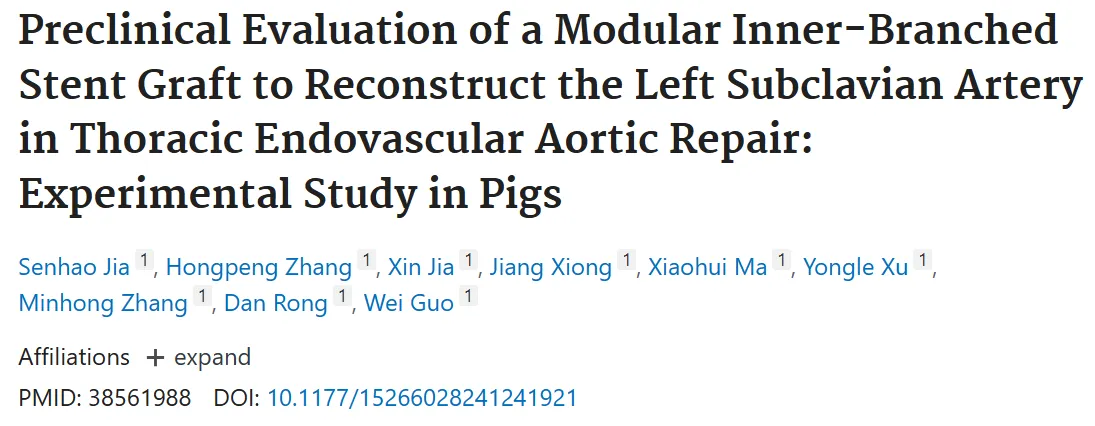
Modular inline branching stent system
This modular inline branch stent device consists of a thoracic aortic stent (TASG) with an inline branch and a bridging coated stent (BCS).The TASG is a nickel-titanium alloy stent with a bare area proximal to the stent and a PET overlay; the overlay has a window proximal to the stent, and the inner part of the overlay is sewn with an inline branch near the distal edge for linking the TASG to the BCS.The TASG has a “figure of eight” marking on the proximal part and a circular marking at the opening of the inner branch. TASG is marked with an “8” at the proximal end and a circular marking at the opening of the internal branch.
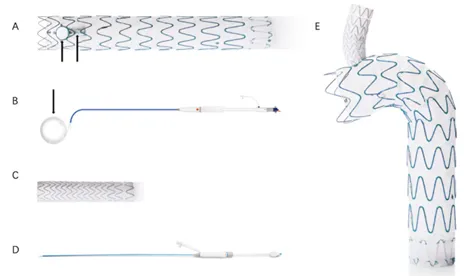
The TASG stent window has a proximal lamination length of 5-8 mm and a uniform inline branch length of 15 mm.The TASG proximal diameters range from 22-46 mm and the distal diameters range from 16-46 mm, and are available in both straight and tapered shapes.The BCS proximal diameters range from 7-18 mm and the distal diameters range from 8-22 mm, and are available in both straight and tapered shapes, providing ample choices for a variety of individual anatomical structures.The TASG inline branch has a preplaced guidewire for easy positioning and delivery of subsequent branches. The TASG is embedded with a pre-positioned guidewire for easy positioning and delivery of subsequent branching stents.
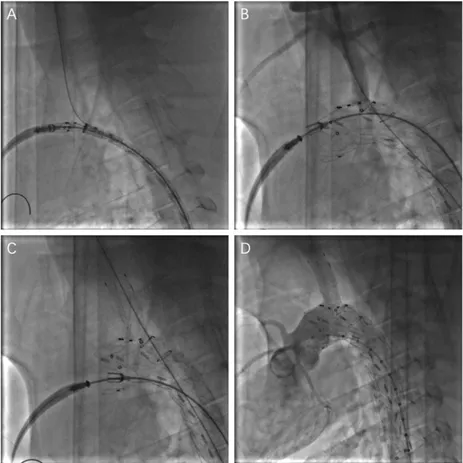
Animal Experimental Research
A total of 14 adult pigs were used in this study to implant modular inlay branch stents via right femoral and right carotid artery approaches with a mean oversize rate of 14.8%. Follow-up time points were 30 d, 90 d, and 180 d postprocedure.CTA and angiography were performed to examine the patency of the overlay stent, internal leakage, and the presence of displacement and fracture. Subsequently, all overlying stents and related tissues were collected for histologic examination.
The technical success rate was 100%. The coated stent fit the aorta well and had good supportive properties. After stent implantation, angiography showed that the aorta and branches were patent, and there was no acute thrombosis or endoleak. 1 pig died suddenly 5 hours after the procedure, and 1 died after completion of CTA follow-up. Follow-up CTA showed that the main body overlay stent was intact without fracture, and all BCSs were patent without displacement or endoleak.
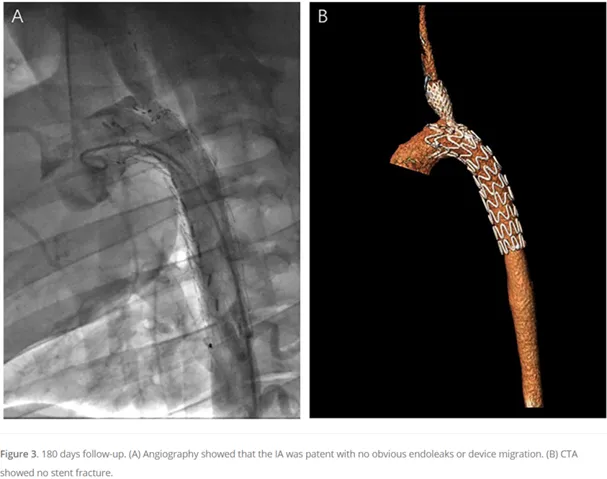
Histologic examination showed that the overlying stent was covered by the endothelium and the elastic lamina had not collapsed; there were no obvious signs of necrosis in the major organs.
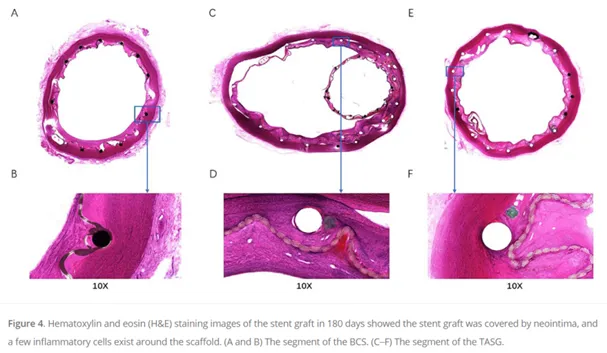
The results of this study demonstrate that implantation of a modular inline branch in a porcine model is safe and feasible, providing clinicians with a more convenient and safe endoluminal device for the treatment of TBAD adjacent to LSA.
参考文献


